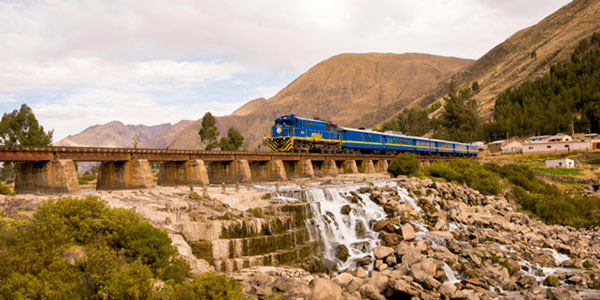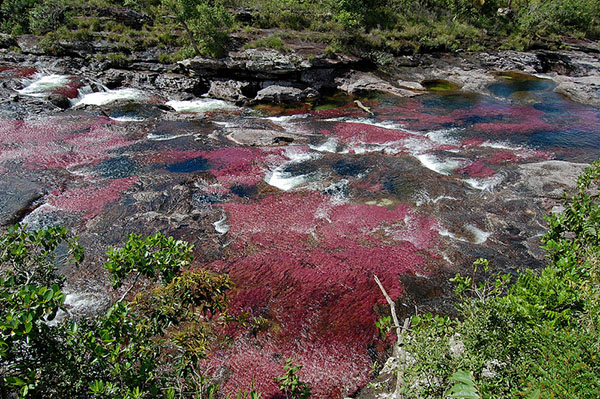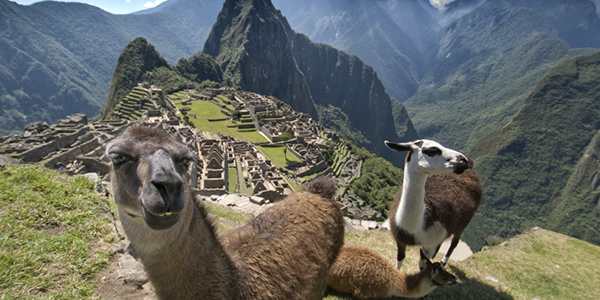
Six Ways To Travel Around South America
South America has it all. The rainforest, the mountains, the coastline and the bustling, colourful cities full of life and character. To see and do it all, there are numerous ways you can travel the continent, whether on foot with a group or just you and a motorbike on the open road. Whichever way you choose to travel, you will be greeted with spectacular scenery, changing climates and local people and wildlife that will further enhance your experience. These are our favourite ways to travel around South America – which one will you choose?
Trekking in Colombia

The changing landscape of Colombia provides a multitude of trekking experiences. From hot to cool temperatures, damp, tropical and dry climates, and low and high altitudes, each region offers breath-taking scenery. Depending on your preference – and fitness – there are multi-day treks and one-day walks across desert, forest and coast, so you can really soak up the natural beauty of this country.
One of the most popular is La Ciudad Perdida, 44km and five days to the lost Kogi Indian city within the coastal mountain range of Sierra Nevada de Santa Marta, which ends with a 1200-step climb through a thick jungle. However, increasing numbers are venturing to Caño Cristales to see what is regarded as one of the world’s most beautiful rivers, the River of Five Colours, but it is extremely remote and requires chartered aircraft.
If you’re shorter on time, there are plenty of one-day hikes where you can see just as much of what Colombia has to offer. From the country’s capital of Bogota, you can view the crystal clear lagoons of Guatavita or Villa de Leyva, for Andean hills and the wax palm tree, Cocora Valley is your best bet, and you can hike the orange and yellow landscape of the Tatacoa Desert – just be careful of the challenging heat.
Treks to all of these areas are available with The Colombian Way.
Chile and Argentina by Campervan

Pick up a campervan in Santiago and you’ll have the freedom to explore Chile and Argentina under your own steam, following the tourist trail or forging your own. You’ll find campsites along the way, or you can pull up and sleep on the beach. Upon polite request, you can even pitch up on the locals’ land or garden, just be sure to leave no trace behind.
Like any road trip, it’s the people you’ll meet who’ll make the journey, and there’s a great deal to see along the way. Close to Santiago you can visit the Laguna Conchalí Lake Sanctuary, then continue north, following the coast to Fray Jorge National Park in the Coquimbo Region. This is also the area that holds the Pichasa Natural Monument, containing the remains of an 8000 year-old human settlement. The capital of the region, La Serena, is home to The New Age lovers’ Cochiguaz, which has a reputation for being popular with UFOs!
Since the building of two observatories in the sixties, tourist observatories have popped up across the Coquimbo Region. The skies are stunning, and the observatories fill up quickly so it’s best to call in advance to ensure you get a chance to appreciate one of Chile’s greatest natural resources.
You can rent a campervan for two to six people, costing from around 50,700 pesos (about $98AUD) a day from Wicked Camper.
Ecuador on a Motorbike

Everyone who watched ‘Long Way Round’ has imagined themselves, at least momentarily, exploring the world on a motorbike. And that’s all you need to explore Ecuador – that, and a license. Plan your own route or take yourself on a self-guided tour with a pre-programmed GPS provided by Freedom Bike Rental. They also run guided group tours on and off-road.
The routes are innumerable, with choices for people of all abilities and confidence levels. The off-road routes take you through villages rarely visited by travellers. Biking up through the Cloudforests, you’ll see wild llamas and alpaca, or take a trip to the Inti-ñan Museum, where you can see the Coriolis Effect change the direction of water flow when you cross the equator. Nearby you can visit typical indigenous homes and the Pululahua Crater Geobotanical Reserve created by a volcanic eruption 2,500 years ago.
You don’t have to stay off-road to see the best of Ecuador. Incan ruins, the Amazon basin, and a Shuar village inhabited by the people famous for shrinking the heads of their enemies, are all easily accessible by road.
The guided tours are all-inclusive, lasting four to 15 days and typically start in Quito in the North. It’s an adventure that can be completely individualised, and without the expense of shipping over your own bike, so really is for anyone that can ride confidently.
Brazil by Boat

One of the cheapest and most authentic ways to see the Amazon is on the riverboats taken by locals from Belém to Manaus in the north. Being packed into a small space crowded with hammocks is either going to leap at you as an unmissable, authentic experience or as completely horrifying. If you’re a bit daunted by the idea, you might need to splash out a little more.
Luckily, with Rainforest Cruises, you have a choice. The Tucano looks much like the ordinary riverboats from outside, but is comparatively luxurious. Whilst the ordinary riverboats contain mostly hammocks with just a few private cabins available, Tucano has nine cabins with bunk or single beds that can be pushed together. Meals are served on board and the cruise allows you to kayak, fish and take excursions on rowboats along the Amazon and Rio Negro. You’ll go on hikes and perhaps be able to spot some of the wildlife along the riverbank.
Of course you’ll almost certainly be sharing the cruise exclusively with other tourists, so you might just make some friends along the way. Prices start at $2,266AUD per person for five days with meals, bottled water, excursions and a guide included.
Peru by Train

There’s really no better way to see Peru than by rail, with a stop at the incredible ground of Machu Picchu. The Vistadome is for those that want to see the environment and the journey towards the Inca site, with departures from Cusco, Ollantaytambo and Urubamba. Large panoramic windows provide an uninterrupted view of the mountains and greenery, so you’ll never miss a picture-perfect moment.
The journey to Machu Picchu takes just over three hours from Poroy Station in Cusco, one-and-a-half hours from Ollantaytambo, and three hours from Urubamba. From Poroy, you will pass towns famous for local delicacies such as piglets dish and the Inca terraces still used by inhabitants today. Passing archaeological site after site, you reach the station of Machu Picchu in the town of Aguas Calientes, which then leads you to the famous site in the Peruvian hills.
Porroy to Machu Picchu on board Vistadome can cost around $90AUD one way with Peru Rail.
Colombia to Chile by Bicycle

Don’t believe anyone who says you need to train for months to cycle across a continent. If you’re lucky enough not to be in a hurry as you pass through South America, there are some perfect tracks for cyclists, and as long as you don’t have any restriction on time you can take as long as you like to get fit on the way. Bikes can easily be taken to pieces and transported on a flight, just check the company’s regulations first.
Bogotá in Colombia holds a car-free day every Sunday, the ‘Ciclovía’, where 110km of highway is closed to allow them to be used exclusively by cyclists with a further 300km of cycleways in Bogotá that can be used through the week.
Whatever route you choose, try to tie in the 4km underground cycle path between Mendoza in Argentina and into Chile. Like many of the most beautiful cycle paths it runs along a disused railway track, linking the countries through coarse mountain scenery.
Patagonia is particularly popular with adventure cyclists, as it has a number of cycle paths as well as beautiful scenery and routes through remote locations. Many argue that cycling is the best way to travel through a country because it’s a mode of transport that most people can relate to, even in some poorer areas. But make sure you bring plenty of supplies for the less populated areas and a good puncture repair kit!
By Ruth McDonald
